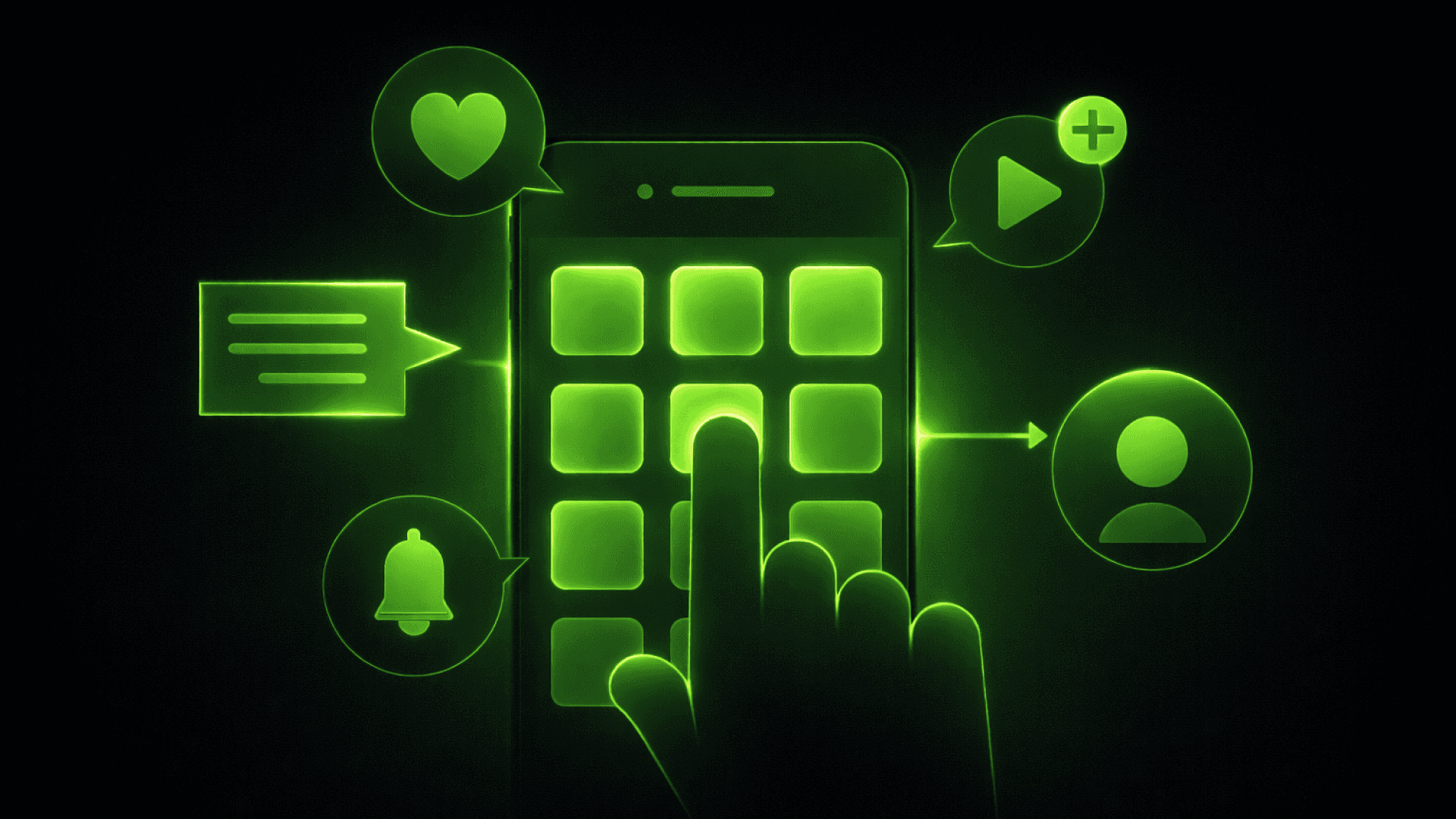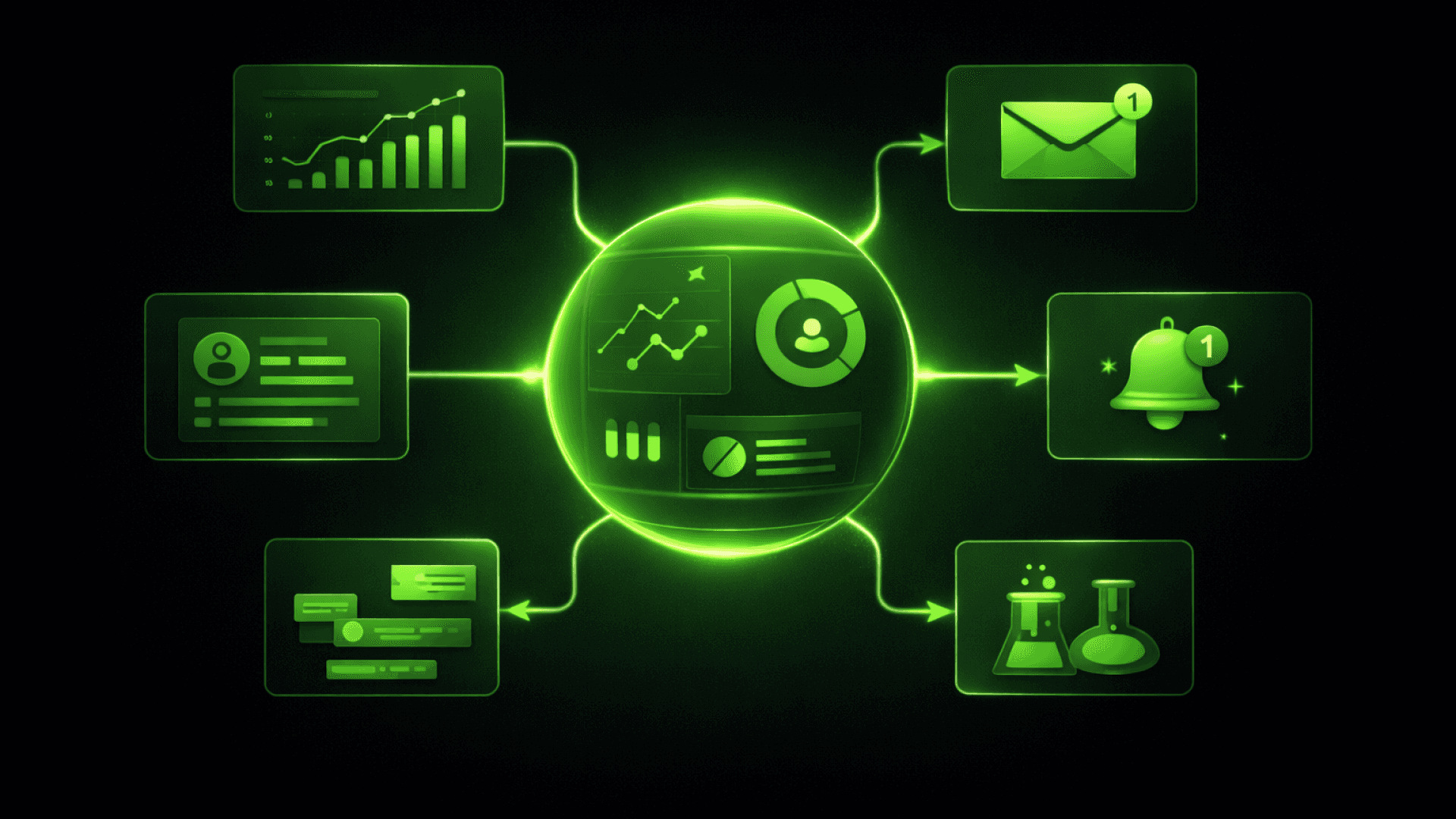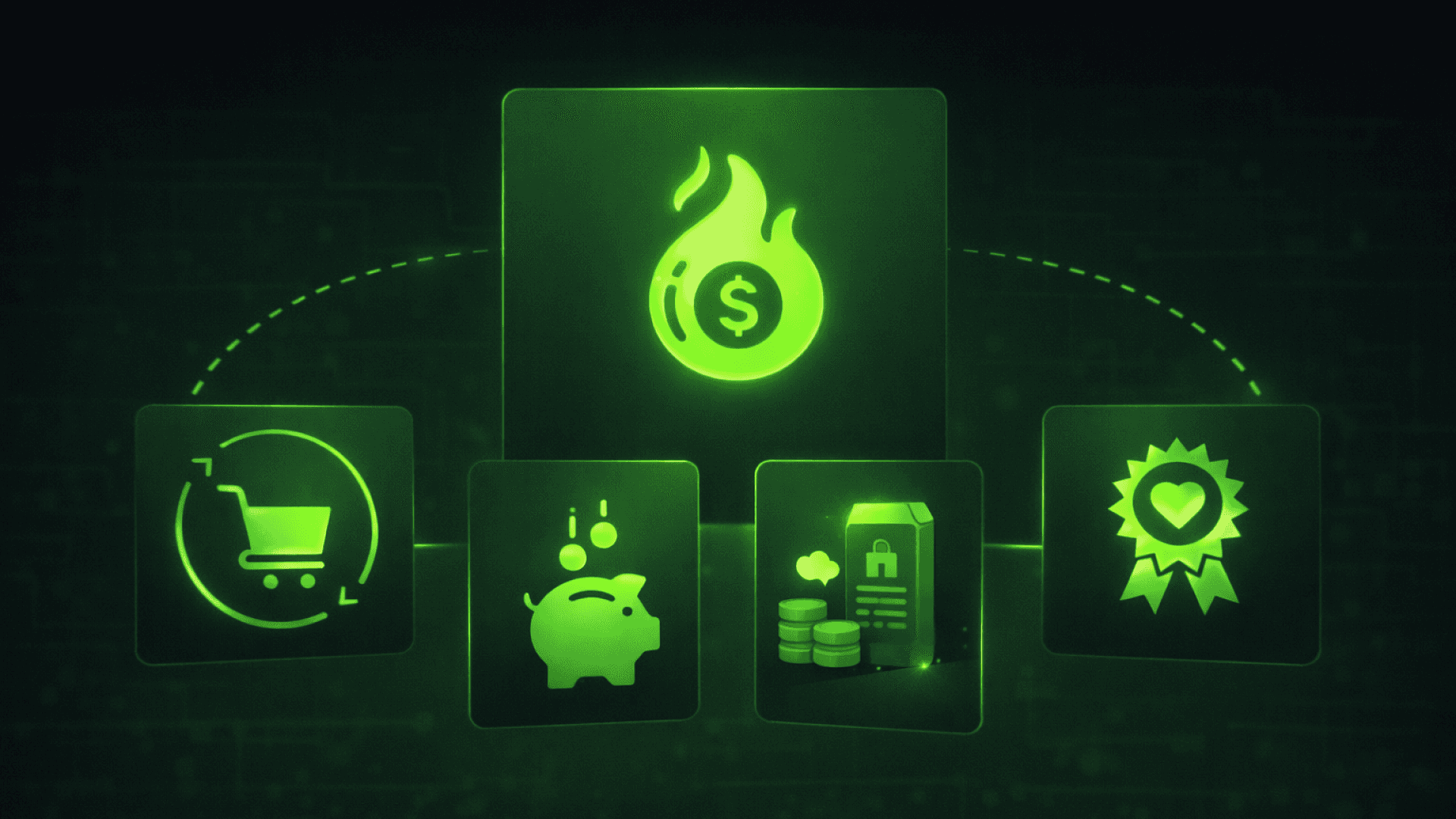Let’s be clear: this isn’t about adding more channels. It’s about connecting the ones you already have.
A strong omnichannel customer loyalty program creates one seamless experience across all touchpoints — online store, in-store POS, apps, messaging — with a unified system and consistent rewards.
Compare that to multichannel loyalty, where every platform runs its own game — separate points, fragmented data, clunky user journeys. That’s how customers slip through the cracks.
Your brand should move as one: people earn in-store and redeem online, check their progress on an app, and get nudged via email or text.
That’s the kind of integration an omnichannel customer loyalty program is built to deliver.
It’s not about being everywhere. It’s about being consistent everywhere.
What Is an Omnichannel Loyalty Program?
How Omnichannel Loyalty Programs Work
Here’s what makes omnichannel loyalty different: everything "talks" to everything.
Integrated loyalty systems are the engine. Your CRM knows what’s happening in your POS. Your mobile apps sync in real time with your CDP. Your loyalty dashboard doesn’t merely show points - it shows patterns.
According to research from AWS, omnichannel shoppers spend more and return more often.
A key takeaway: With integrated loyalty programs, not only does engagement rise, but loyalty deepens via unified paths across touchpoints.
From the outside, customers just see simplicity. They get rewards where they shop. They get nudges that actually match their behavior. They redeem instantly, not through five steps and a forgotten password.
From the inside, your team sees signals - what’s moving, what’s lagging, and what’s next.
That’s loyalty through integrated channels. And once it’s up and running, it keeps your brand tight across every touchpoint - instead of scattered across disconnected tools.
This isn’t a wishlist. It’s what modern loyalty looks like when it actually works.
Core Benefits of Omnichannel Loyalty Programs
Let’s skip the fluff. If your loyalty program can’t prove its value - across real channels, to real people - it’s noise.
Here’s what omnichannel loyalty actually does when it’s done right.
1. Consistent Brand Experience
Customers don’t care how your tech stack is wired. They care that the system feels the same, no matter where they tap, scan, or show up.
An omni channel loyalty program keeps your experience tight. Same tone. Same logic. Same flow. Whether someone is on your site, at a pop-up, or scrolling through mobile apps, the brand hits the same.
And that consistency? It builds trust faster than any points system ever will.
2. Richer Customer Insights
You can’t optimize what you can’t see.
When your loyalty data sits in silos - web over here, in-store over there, email somewhere else - you miss the full picture. And you make half-blind decisions.
Omni channel loyalty programs give you unified visibility. One customer ID. One behavior trail. One place to track what people do - and what they ignore. A Harvard Business Review study found that omnichannel shoppers made 23% more repeat visits and spent 10-15% more across channels
That’s how you stop guessing and start learning.
3. Improved Retention
People don’t stick around because they like your brand. They stick because your brand shows up where - and how - they want it to.
Omnichannel customer loyalty makes sure you’re not simply present, but relevant. From SMS nudges to push notifications, from cart reminders to in-store perks - the experience adapts.
Retention isn’t about locking people in. It’s about giving them reasons to stay without needing to ask.
4. Higher Customer Lifetime Value (CLV)
More touchpoints. More opportunities to deepen the connection.
When you run a fragmented system, you leave money on the table - literally. But with a tight omnichannel loyalty program, every interaction feeds into a larger loop.
Customers engage more. Spend more. Come back more. And omnichannel loyalty solutions make sure the value keeps stacking.
CLV isn’t magic. It’s what happens when loyalty gets smart.
5. Marketing Efficiency Across Touchpoints
No more reinventing the wheel for every channel.
When your loyalty is omnichannel, your campaigns stretch further. One core offer, repurposed across web, app, email, and store - without losing context.
That’s the power of omni channel loyalty marketing - you hit people where they are, without scattering your efforts. Less noise. More impact.
Must-Have Channels for Omnichannel Loyalty
You don’t need to be everywhere.
You need to be where it counts - and make it feel seamless.
These are the omnichannel loyalty touchpoints that aren’t optional anymore.
1. eCommerce Platforms
Your website isn’t only a shop. It’s the HQ of your loyalty logic.
This is where people browse, buy, check their status, redeem points, leave carts, and come back. A strong omnichannel loyalty program makes all of that part of one smooth loop.
From the moment a user logs in, every click should feel like it’s part of a personalized track - not a reset button.
2. Physical Retail Stores
Still think in-store is old-school? It’s not. It’s alive, tactile, and emotional.
That said, walking into a shop should feel like picking up where the app left off. Or the email. Or the ad. No extra steps, no repeats. Just instant recognition and reward.
That’s how omni channel loyalty programs turn casual foot traffic into relationship-building moments.
3. Mobile Apps
If you're not optimizing for mobile, you’re handing loyalty to your competitors.
Apps are where loyalty lives in real time. Push alerts, location triggers, mobile check-ins, quick redemptions - it’s the fast lane.
And the best omnichannel loyalty solutions turn mobile into the heartbeat of engagement. You don’t need bells and whistles. You need a channel that feels instant, native, and human.
4. Social Media Platforms
People don’t follow brands. They follow signals.
A loyalty program that plays smart on social doesn’t simply offer perks – it lets users feel like insiders. A well-timed story perk or early drop can feel like a personal invite.
The best loyalty programs slip into your scroll, not merely your inbox.
Omnichannel loyalty doesn’t solely live in the feed. It thrives in the rhythm of how people scroll, tap, and share.
5. Lifestyle and Partner Channels
It’s not all about your ecosystem. It’s about theirs.
Omnichannel loyalty marketing becomes more powerful when it plugs into everyday life - fitness apps, travel platforms, delivery services, events. Think beyond your product. Think about your customer’s actual world.
The more naturally your loyalty program shows up there, the less you need to sell it.
How to Build an Omnichannel Loyalty Program
Real omnichannel loyalty doesn’t just “exist on every channel.” It feels seamless - like the brand knows who you are, wherever you show up. To build something that customers actually stick with, you need more than a points engine. You need strategy, integration, and a little empathy.
Here’s how to build it right.
1. Define Goals and Target Audience
Before you send your first reward, get brutally clear on two things:
What you want loyalty to drive (Retention? LTV? Referrals?)
Who you're designing for
Not every customer segment needs the same level of engagement. A Gen Z mobile gamer expects something wildly different than a B2B decision-maker. Your omnichannel loyalty program should reflect that - in tone, rewards, and cadence.
Skip this step, and you’ll end up speaking to everyone and resonating with no one.
2. Choose a Loyalty Model That Scales
Punch cards don’t scale.
You need an omni channel loyalty program that evolves with your business.
Whether it’s tier-based, spend-based, or behavior-based - the key is flexibility. Your model should support new channels, new behaviors, and new customer types without needing a full rebuild.
Think in frameworks - your omni channel program should be built to adapt, not patched over time. Because scaling isn’t just about adding features - it’s about avoiding rework.
3. Select the Right Channels
“Omnichannel” doesn't mean you need to be everywhere. It means you need to be where it matters.
Start with the channels your customers already use - and expand only if you can deliver the same quality of experience there.
Loyalty shouldn’t feel different on mobile vs. desktop vs. in-store. Whether it’s an app notification, an email, or a point-of-sale prompt - the tone, logic, and rewards should match.
4. Ensure Technology Integration (CDP, CRM, POS, Apps)
This is where most loyalty programs break.
If your systems don’t talk to each other, your customer experience will feel just as disconnected.
Your loyalty management platform should act like a central brain - connecting your CDP, CRM, POS, mobile app, and email engine.
Real-time sync isn’t optional. It’s the only way to reward users without delays, errors, or awkward “please contact support” moments.
Integrated tech = integrated experience.
5. Personalize the Experience Across Channels
Customers don’t simply want points. They want to feel seen.
Use the data you already have – purchase history, preferences, behavior – to deliver rewards that actually matter. A personalized push notification on the app will always outperform a generic blast email.
True omnichannel loyalty programs don’t merely remember names. They remember context.
6. Test, Measure and Continuously Improve
Loyalty is not a set-it-and-forget-it operation.
Track redemptions. Watch drop-offs. Test reward types, timing, and copy. Then iterate fast.
Your omnichannel loyalty solution should help you run A/B tests, launch quick tweaks, and measure ROI – not merely display vanity metrics.
Great loyalty programs evolve with their users. The only constant is change.
Want to know how to measure ROI of loyalty programs using integrated analytics? Start by tracking outcomes across real customer behavior – not simply vanity clicks.
Examples of Great Omnichannel Loyalty Programs
Starbucks Rewards
Starbucks doesn’t just hand out points. Their program is everywhere you want it - the app, the store, even your morning order. You earn Stars by buying, pay without fuss, and redeem rewards when and where you want.
What makes it work? Every channel is synced. Your app knows what you bought in-store. Points never disappear between visits.
Behind the scenes, Starbucks links POS, mobile, and CRM tightly, so the experience is seamless. The result? Over half of Starbucks sales now come from Rewards members. Simple loyalty that fits into real life - not the other way around.
Sephora Beauty Insider
Sephora’s program doesn’t simply toss points your way. It feels like it actually knows you. You glance at your phone, see what perks are waiting, grab a freebie at checkout – all without jumping through hoops.
Offers aren’t merely random coupons; they fit what you actually want (like your skin type or stuff you’ve been eyeing). Plus, Sephora mixes online and offline with cool events and early product drops. It’s not solely loyalty – it’s a reason to keep coming back.
Nike Membership
Nike Membership isn’t about points or tiers. It’s about access - real, meaningful access. Access to exclusive drops on the SNKRS app, early invites to events, and personalized workouts through Nike Training Club. It’s not a loyalty program you check off. It’s a lifestyle you join. Every touchpoint knows you, whether you’re online or in a store. The app, the website, the physical shop - all connected, all synced. The value isn’t just in rewards. It’s in feeling part of something bigger. Nike built a culture, not a points system.
Nike Loyalty Program: Explore What Makes Nike Successful With Enable3
Discover how Nike built one of the most successful loyalty programs in the world
Common Pitfalls to Avoid
Siloed Data Systems
When your data lives in separate pockets - the app doesn’t talk to the store, the CRM misses the website - customers feel the disconnect. Points vanish, offers don’t match, and the experience feels patchy.
Integrated systems aren’t optional. They’re the backbone of any working omnichannel program. Without them, you’re just spinning your wheels, or worse, losing customers to smoother setups.
Inconsistent Messaging
Mixed signals kill loyalty faster than anything. When your tone shifts from email to app to store, customers get confused. One message says “Join us,” another “Spend more,” and another “Wait, what?”
Keep your voice steady. Be clear and consistent. Customers should feel like they’re hearing from the same brand, no matter how or where you reach them.
Overcomplicated Rewards Logic
If it takes effort to understand, most people won’t bother. Complex rules don’t build loyalty. They build frustration. According to Gartner, reducing customer effort drives loyalty more effectively than over-delivering on experience.
Keep it simple. Make progress visible. Make redemption smooth. Confusing mechanics kill momentum.
Poor Onboarding & Education
A smart program still flops if no one gets how it works. Make it intuitive. Show value fast. Remind gently. Support kindly. Education isn’t a one-off - it’s a quiet, ongoing guide that keeps people coming back.
Final Thoughts: The Future of Loyalty Is Omnichannel
Loyalty used to be a nice-to-have. Now, it’s the backbone.
Loyalty’s future isn’t in more channels - it’s in better flow.
Wherever your customers land, it should feel like the same conversation.
Customers don’t want to jump through hoops. They want brands that know them, recognize them, reward them - wherever they are, whenever they engage.
This is no longer about perks. It’s about presence.
Omnichannel loyalty isn’t a feature you add last minute. It’s how you build a relationship that lasts.
FAQs
How do I choose the right loyalty program for my brand?
Start by watching your customers. What do they already do? Do they come back because it’s easy? Because they feel rewarded? Build your program around their natural habits - not what looks good on paper. If you have to explain it too much, it’s probably too complicated.
What makes a loyalty program work in 2025?
It fits seamlessly into the experience. It doesn’t slow people down or confuse them. It shows up just when it needs to, reminds people why they came back, and gives them a reason to stay a little longer.
Can Web3 improve my loyalty program?
A well-designed web3 loyalty platform can boost loyalty when it’s used with intent. Digital rewards like tokens or NFTs become something users actually own — not just redeem and forget. It’s less about hype, more about giving people a real stake in the experience.
What KPIs matter most for loyalty?
Keep it simple. Customer lifetime value, retention rates, reward redemption, and churn tell you the basics. Then add engagement, like tier progress and referrals, and sentiment, like NPS and feedback. Together, they show what’s really working.
How to track cross-channel engagement in omnichannel loyalty programs?
The right platform lets you track cross-channel engagement omnichannel loyalty programs rely on - in real time, across every touchpoint. Use integrated systems that tie together customer actions from every touchpoint. Without a full picture, you’re just guessing.







